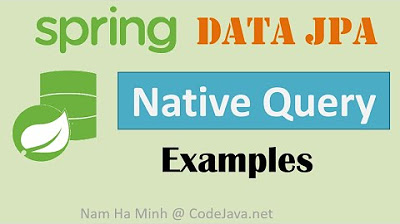How I built an AI Teacher with Vector Databases and ChatGPT
Summary
TLDRIn this tutorial, the creator explains how they built an AI teacher using vector databases and ChatGPT to efficiently answer student queries. By integrating transcripts from video lessons into a vector database, the system can retrieve relevant content and generate accurate responses quickly. The tutorial covers the concept of vector databases, how they represent video content in a high-dimensional space, and how they work with OpenAI's API to augment responses. The creator also demonstrates the implementation process using AWS and Neon, providing valuable insights into setting up the system and ensuring its scalability.
Takeaways
- 😀 Vector databases can improve AI response quality by providing context from related content.
- 😀 Using traditional teaching assistants is expensive, slow, and difficult to scale.
- 😀 A large language model (LLM) like ChatGPT can answer student queries instantly, but its quality must be ensured through proper context.
- 😀 OpenAI's APIs can be used to query and store relevant content for a more efficient AI-based teaching assistant.
- 😀 Vector databases represent data as n-dimensional vectors, enabling efficient similarity search and context retrieval.
- 😀 Vector databases, like Neon, use algorithms (e.g., Navigable Small World) to group similar content together, reducing computation time for similarity searches.
- 😀 AWS Transcribe helps convert video and PDF lessons into text, which can then be indexed in vector databases for faster query response.
- 😀 The system retrieves context from vector databases and sends relevant files to ChatGPT to generate answers based on specific queries.
- 😀 Retrieval-Augmented Generation (RAG) is an approach where context is retrieved from a vector database and augmented into an AI model’s response.
- 😀 Neon’s database offers versioning history and seamless integration with Postgres, making it an easy and reliable choice for developers building AI systems.
- 😀 Using transcription and AI models together allows for fast responses to student queries, while allowing admins to refine answers for quality control.
Q & A
What is the main purpose of building an AI teacher for InterviewReady?
-The main purpose is to provide immediate, automated responses to student queries related to video lessons and PDFs, reducing the need for costly teaching assistants.
Why did GKCS initially use OpenAI’s API, and what was the result?
-GKCS initially used OpenAI's API to generate responses to student queries. However, the results were poor, as the responses were not accurate or useful enough.
What are vector databases, and how do they help in improving the AI teacher's responses?
-Vector databases store data in a multi-dimensional space, allowing the system to retrieve similar objects (like video transcripts) based on a query. This enables the AI to give more contextually accurate and human-like responses.
How do vector databases represent data, and what are the dimensions involved?
-Data in vector databases is represented as points in an n-dimensional space. For example, one dimension might represent video length, another might represent the frequency of certain terms, and additional dimensions can be used to represent other factors like term density.
Why is the use of Postgres important in this setup?
-Postgres is important because it provides the relational database foundation that Neon builds on, offering scalability and flexibility while also supporting the vector database functionality.
What are the advantages of using Neon as the vector database solution?
-Neon is a serverless, Postgres-based database with a simple setup, robust documentation, and scalability. It also supports efficient clustering and versioning, which are critical for managing large datasets in vector databases.
What is the NSW (Navigable Small World) algorithm, and how does it improve performance?
-The NSW algorithm clusters vectors that are close to each other, creating representative vectors for each cluster. This reduces the number of comparisons required, improving the efficiency and speed of similarity searches in the database.
How does the AI teacher provide responses to user queries?
-When a user asks a question, the AI system queries the vector database for relevant video transcripts, then sends these relevant files to ChatGPT to generate a response. The system ensures that the response is contextually accurate by considering all related content.
How does retrieval-augmented generation (RAG) work in this setup?
-RAG involves retrieving relevant context from a vector database and augmenting the query with this information before generating a response. This ensures that the AI can provide more accurate answers by using all relevant data.
What role does AWS Transcribe play in this process?
-AWS Transcribe is used to convert video and audio content into text, which is then stored in the vector database. This transcription step is essential for enabling the AI to search through content and generate accurate responses to student queries.
Outlines

هذا القسم متوفر فقط للمشتركين. يرجى الترقية للوصول إلى هذه الميزة.
قم بالترقية الآنMindmap

هذا القسم متوفر فقط للمشتركين. يرجى الترقية للوصول إلى هذه الميزة.
قم بالترقية الآنKeywords

هذا القسم متوفر فقط للمشتركين. يرجى الترقية للوصول إلى هذه الميزة.
قم بالترقية الآنHighlights

هذا القسم متوفر فقط للمشتركين. يرجى الترقية للوصول إلى هذه الميزة.
قم بالترقية الآنTranscripts

هذا القسم متوفر فقط للمشتركين. يرجى الترقية للوصول إلى هذه الميزة.
قم بالترقية الآنتصفح المزيد من مقاطع الفيديو ذات الصلة

Try THIS Notion + ChatGPT Productivity Workflow

How to connect to XAMPP MySQL from VSCode Easily (2024)

No Code RAG Agents? You HAVE to Check out n8n + LangChain

Spring Data JPA Native Query Examples

Explained: The Voiceflow Knowledge Base (Retrieval Augmented Generation)

How to Automate Midjourney in Minutes
5.0 / 5 (0 votes)
